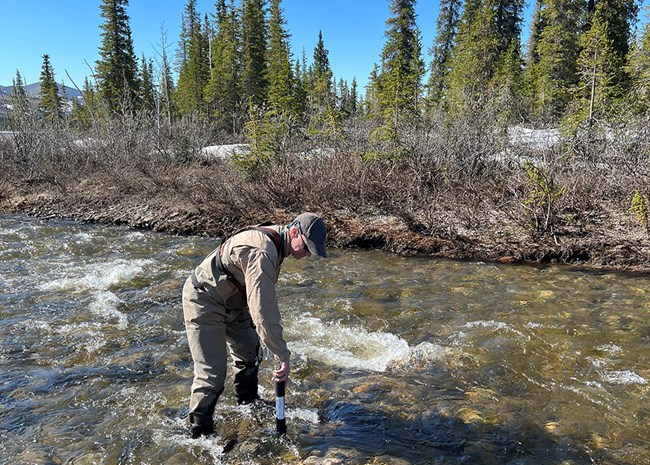Last updated: June 11, 2025
Article
How Arctic Fish Respond to Warming Streams and Thawing Permafrost

USGS/Mike Carey
Linking Permafrost to the Abundance, Biomass, and Energy Density of Fish in Arctic Headwater Streams
Abstract
Permafrost thaw alters groundwater flow, river hydrology, stream-catchment interactions, and the availability of carbon and nutrients in headwater streams. The impact of permafrost on watershed hydrology and biogeochemistry of headwater streams has been demonstrated, but there is little understanding of how permafrost influences fish in these ecosystems. We examined relations among permafrost characteristics, the resulting changes in water temperature, stream hydrology (e.g., discharge flashiness), and macroinvertebrates, with the abundance, biomass, and energy density of juvenile Dolly Varden (Salvelinus malma) and Arctic Grayling (Thymallus arcticus) across 10 headwater streams in northwestern Alaska. Macroinvertebrate density was driven by concentrations of dissolved carbon and nutrients supporting stream food webs. Dolly Varden abundance was primarily related to water temperature with fewer fish in warmer streams, whereas Dolly Varden energy density decreased with the flashiness of the headwater streams. Dolly Varden biomass was related to both temperature and bottom-up food web effects. The energy density of Arctic Grayling decreased with warmer temperatures and discharge flashiness. These relations demonstrate the importance of terrestrial–aquatic connections in permafrost landscapes and indicate the complexity of landscape effects on fish. Because permafrost thaw is one of the most impactful changes occurring as the Arctic warms, an improved understanding of how stream temperature, hydrology, and bottom-up food web processes influence fish populations can aid forecasting of future conditions across the Arctic.Carey, M. P., J. C. Koch, J. A. O’Donnell, B. A. Poulin, and C. E. Zimmerman. 2025. Linking permafrost to the abundance, biomass, and energy density of fish in Arctic headwater streams. Ecosphere 16(5): e70270.
